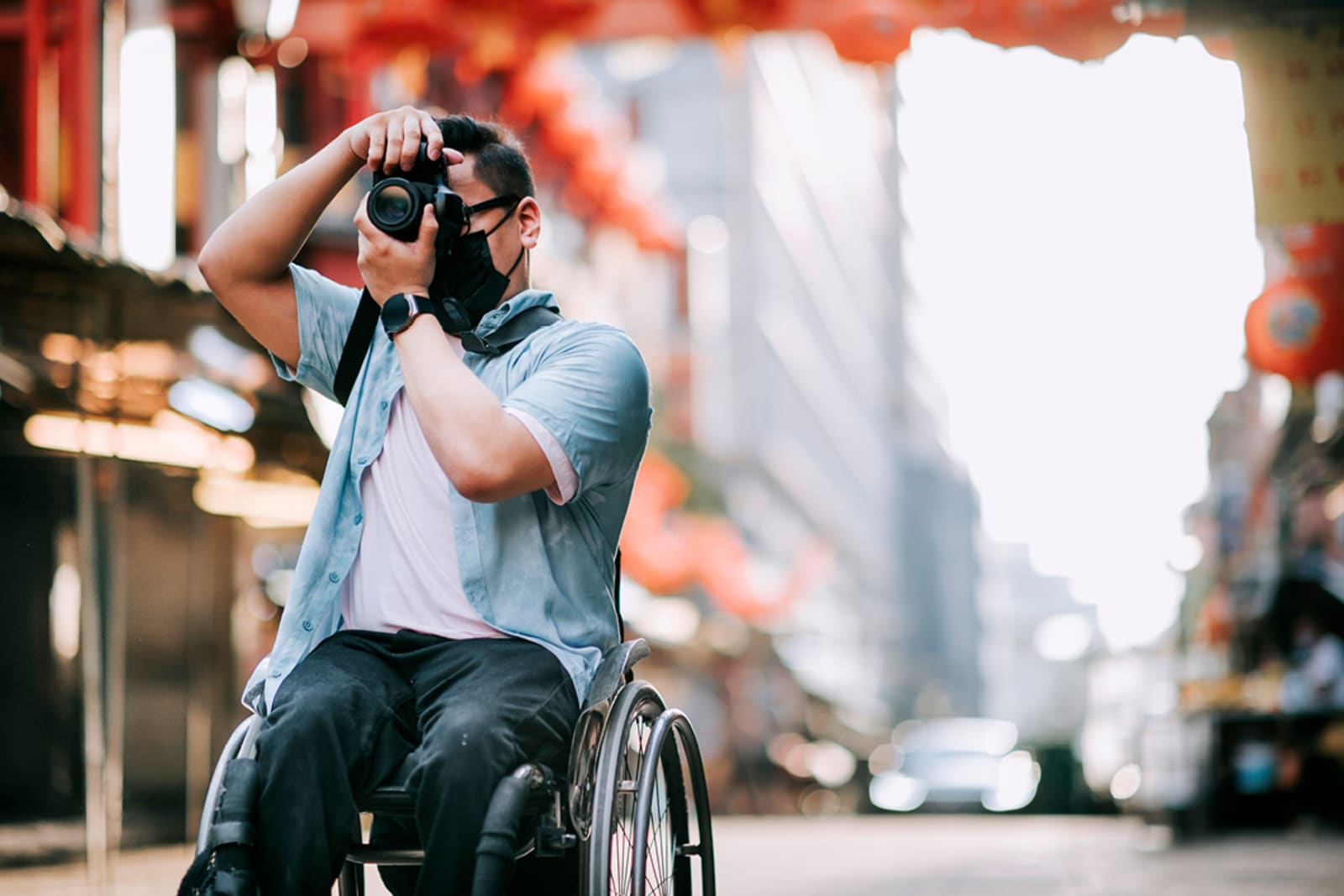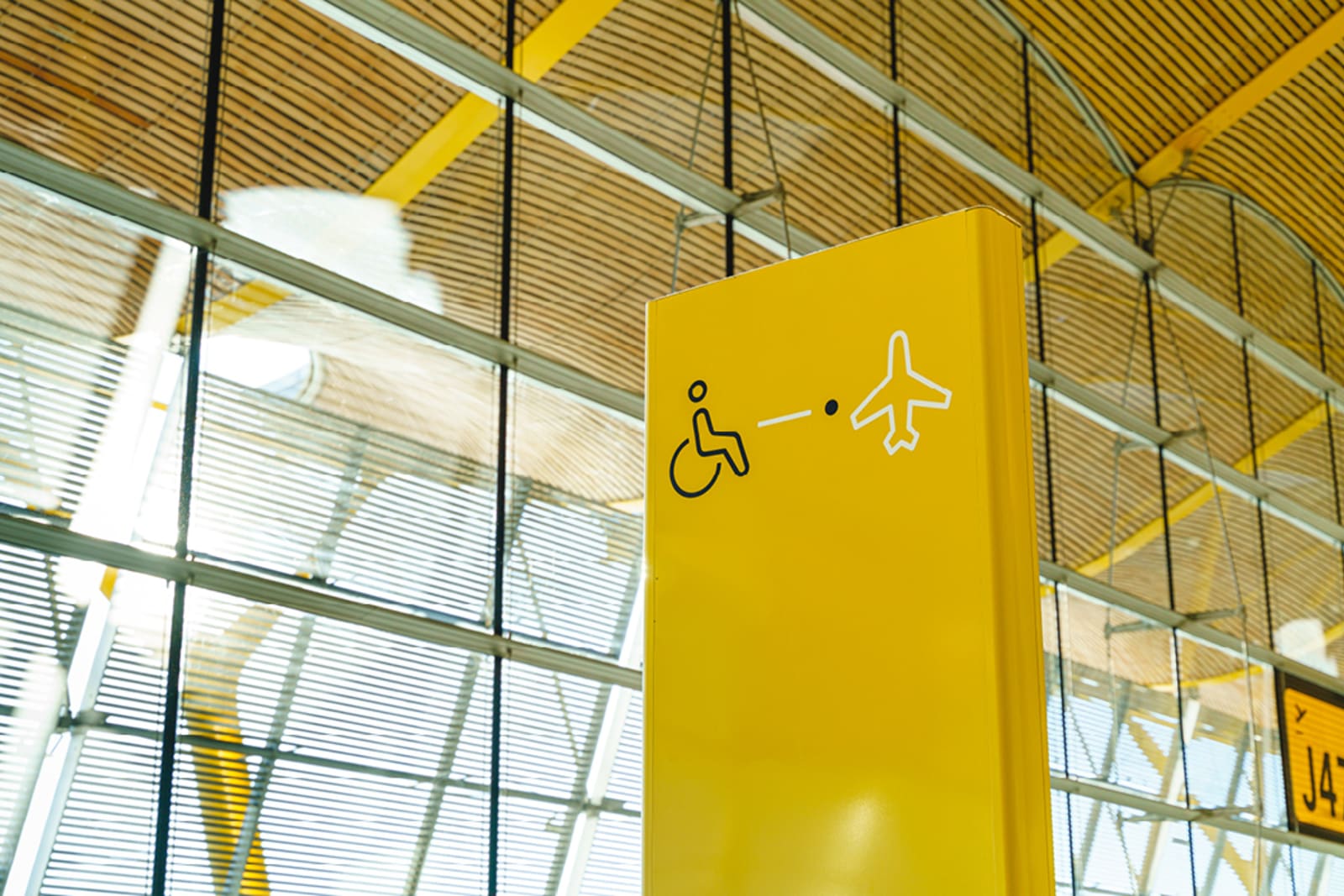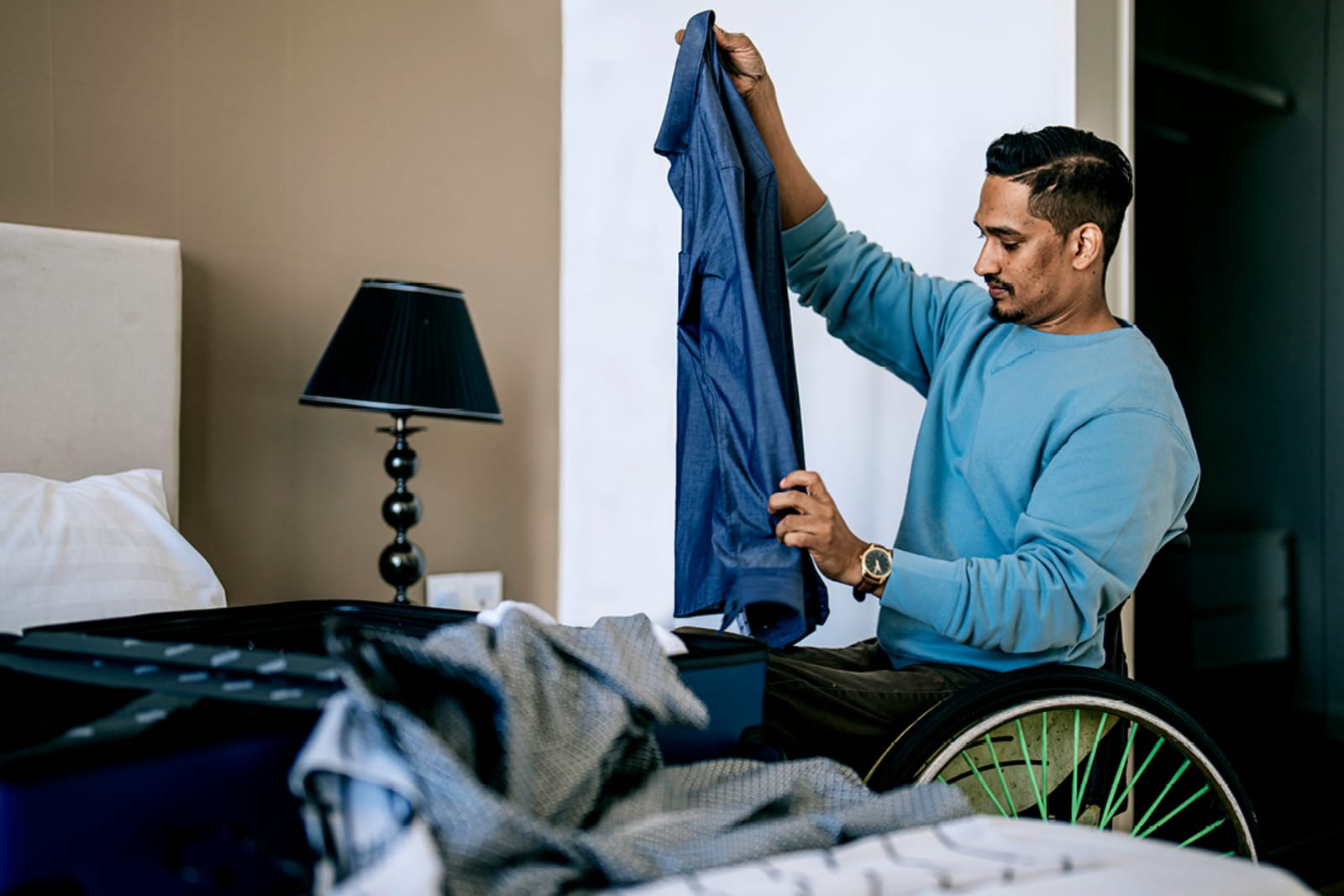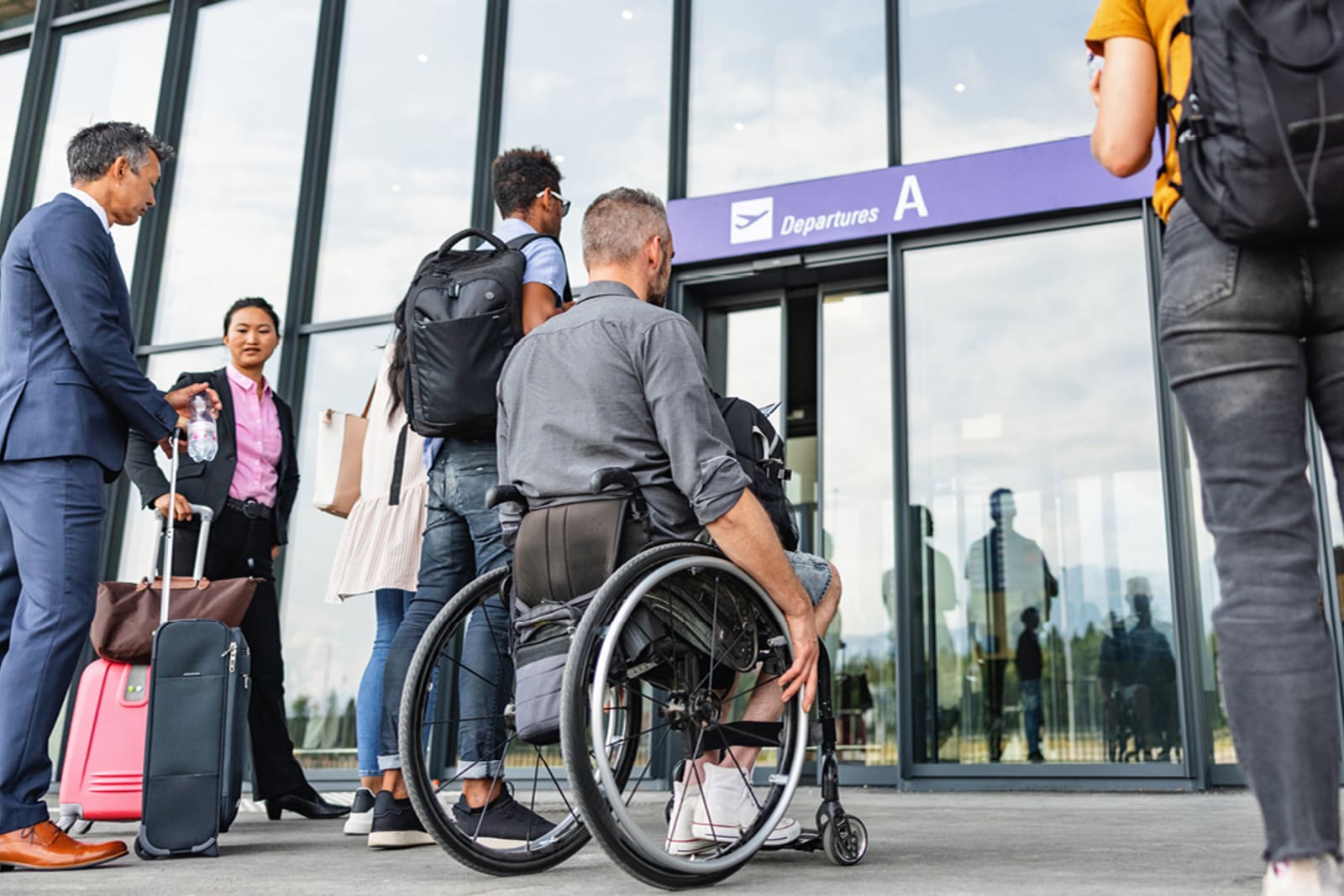Our Top Tips for Flying with a Wheelchair
Follow this advice to help protect yourself and your chair, and minimize stress during your journey.

5min read
Published 23 April 2024
Follow this advice to help protect yourself and your chair, and minimize stress during your journey.
Whether you're travelling for business or pleasure, catching a flight can be daunting for anyone. And if you live with a disability and use a mobility device to access the world, the prospect of air travel can be even more complicated.
Beyond booking your ticket and packing your bags, travellers that use wheelchairs often find themselves asking questions like: How accessible is the plane? Will my wheelchair get lost or damaged? Do flight attendants help with wheelchairs? How much extra is it to bring my medical equipment and bulky items like shower chairs?
While the prospect of leaving your home and comfort zone can be intimidating, at Flight Centre we’re passionate about opening up the world for everyone to see. Travel is not just for able-bodied folks, and we want people of all abilities to feel welcome and motivated to experience the joy of other countries and cultures.
We can't promise the experience will be seamless, but with a proactive approach, pre-planning and some patience, there’s no reason why wheelchair users can't head off on their dream vacation. With that in mind, we've chatted with some experienced travellers who also happen to be wheelchair users to gather some helpful tips for flying with a mobility device. Here’s what we learned.
Contents



Plan, plan, plan
Whether it's your first flight in a wheelchair or you're a seasoned professional, being proactive is the best thing you can do to help decrease stress and set yourself up for an epic trip. There is no one-size-fits-all approach to flying with a disability, so we recommend working with your travel consultant and the airline to understand all the relevant policies and procedures before you depart.
Before you do anything, make sure you know the dimensions of your wheelchair (height, width, weight), and have a clear outline of your needs and what equipment is required for you to have a safe and enjoyable vacation.
If you have a power wheelchair, it’s also important to know if it uses wet, gel cell or dry cell batteries. Likewise, if you require a ventilator or other battery-operated equipment, it's likely you'll need to fill out a dangerous goods form so that you can fly with the equipment as hand luggage.
If you're a wheelchair user, keep in mind that you'll be first on and last off the plane. Avoid booking any super tight connections and consider letting any ground transfers know that you may need a little extra time.
Chat with the airline directly
Policies and procedures will differ between airlines, so the best thing you can do is give them a call. From here, the airline's disability service division or customer service department can answer any questions about packing, security, boarding, flying and more.
While everyone's needs will differ, make sure you discuss the following:
- Your chair’s weight, dimensions and battery type (if applicable).
- The best way to prepare your wheelchair or mobility equipment for transportation and stowing during the flight.
- Your needs for transferring into the aisle chair. Can you self transfer, are you travelling with someone who can assist you or do you need support from the airline?
- Whether you require an extender belt or upper torso harness.
- If there is any form of concession card discount for your support worker or carer (Virgin Australia offers 50% off eligible carers).
- The boarding and deplaning procedure.
It's also worth checking out airlines’ specific pages dedicated to accessible travel for wheelchair users and people with reduced mobility. We've linked a few below to make it easier.



Understand your rights as a disabled traveller
All airlines must adhere to the Air Carrier Access Act (ACAA), which makes it illegal to discriminate based on disability.
The ACAA stipulates that airlines must assist disabled passengers with boarding, deplaning, making connections and any other accommodations at no additional cost. Likewise, you should never be charged for stowing your wheelchair or essential mobility devices.
All airport staff should be across these guidelines, offering assistance if and when it is needed.
Purchase travel insurance
Travel insurance should be a non-negotiable for everyone, including those that live with a chronic illness or disabilities. Not only is it an essential way to protect yourself against overseas medical costs, but it can also help cover costs should your wheelchair or mobility equipment be damaged while on vacation.
Do not assume that just because you are disabled or live with a chronic illness that you cannot be covered. Chat with your Flight Centre travel consultant to find a policy that includes an existing medical condition benefit, and make sure you understand what is and isn't included in your insurance premium.



Pack smart
Here are a few tried and tested tips to ensure you're ready to go:
- Pack enough catheters, medication and daily medical supplies to last the entire trip. This is especially crucial for international trips where it may be harder to locate more supplies.
- Split your medical supplies and pack enough essentials to last a few days in your carry on in case your checked luggage gets lost or delayed. If you're travelling with companions, it's also worth popping some essentials in their bags to cover all bases.
- Most airlines allow medical equipment like shower chairs and bags of medical supplies to fly free. Double check the airline's policy to confirm this before you depart.
- Remember other in-flight essentials like compression stockings, straws, wet wipes and anything else that might make your life a little easier. It's always better to bring things rather than assume the plane will have it stocked on board.
Bring an emergency repair kit
It’s a good idea to bring a DIY repair kit with you — just in case your wheelchair gets damaged. While the needs will vary based on your chair and destination, we recommend including:
- Duct tape
- Bubble wrap to protect your chair
- Allen wrenches to fit the screws on your chair
- Replacement screws
- Wheelchair user manual
- Extra tire tubes
- Zip ties
- Spare parts
If you're heading overseas, it's also worth doing some research for a contact to assist should your wheelchair get damaged while you're away.
What if my wheelchair gets damaged during flight?
If your wheelchair or mobility equipment is damaged during transit, the airline must pay for repairs or a replacement in the instance that it cannot be repaired. This is a requirement as stipulated by the Department of Transportation and the Air Carrier Act.
If you notice any damage, first assess if the wheelchair can still be used and if your emergency kit can temporarily get you moving again. From here, make sure you report any damage (even scratches and dings) directly to the airline at the baggage claim area before you leave the airport. You should be given a reference number along with details on how to contact a complaint resolution official.
Take plenty of pictures and rest assured that the airline cannot leave you high and dry without your chair or a means to get around.
Prepare your wheelchair
Regardless of where you are going or what your travel plans are, here are some ways to prepare your wheelchair before boarding the aircraft. Keep in mind that this will vary between chairs and planes, so consider asking about wheelchair prep when you chat to the airline.
Manual chairs
Remove the wheels* so the chair can be folded and stowed in the closet of the plane. Take off any loose items such as footplates, knee supports, valuables, headrests, side guards and armrests.
*Some travellers opt to keep their wheels to avoid any risk of them getting lost.
Power chairs
These vary from person to person and are a bit more involved than manual chairs. If you've never travelled with your power chair before, consider chatting with an adaptive technology technician or someone from the wheelchair company for advice on how to prep it for flight. In general, you may need to consider the following:
- Turn off the control panel from the main switch.
- Switch the brakes off so that your chair can be pushed.
- Recline the back of your wheelchair so it will fit in the cargo space.
- Pull the joystick control panel inwards and wrap with bubble wrap and duct tape.
- Attach written instructions on how to power on, power off and release break so it can be manually operated by ground crew.
Beyond these specific wheelchair tips, we also recommend that you:
- Take pictures of the final state when you hand your chair over to the flight crew. That way if it is damaged you can show what it looked like when it left your hands.
- Tag the chair with your name, address and phone number.
- Pop an AirTag on your chair to track it while in transit.
- Bring your cushion onboard to help relieve pressure from sitting. It's also worth keeping the cushion with you to avoid any risk of it getting lost during transit.



Give yourself plenty of time at the airport
With your bags packed and excitement levels high, the last hurdle is actually boarding the plane.
Airlines have a large network of complimentary meet and assist services that can be selected during booking. If you've opted in, one of the assistance staff will help with everything from checking in to passing security and boarding your aircraft.
While checking in, always opt to gate check your wheelchair. From here, you can roll through security in the wheelchair line where you and your chair may be patted down and scanned.
Once through security, aim to be at your gate at least 40 minutes before boarding time. When boarding commences, you'll say goodbye to your chair and begin the transfer process to an aisle chair. Make sure you are clear and firm with the airline staff on the best way to perform your transfer to avoid any confusion or concern. If you're travelling with a support worker or support team, they can lead the transfer process to your airplane seat.
When you arrive in your destination, sit tight and be patient as you'll be the last to disembark. From here, prepare to do everything in reverse as you transfer to the aisle chair and then travel out to the gate where your wheelchair should be waiting or on its way from the cargo hold.
In an ideal world, the process should go by without a hitch. If that isn't the case, try not to stress and remember there are procedures and safeguards in place to ensure you reach your destination safe and sound.
Travel tip: While airlines are slowly bringing in accessible bathrooms, it's safe to assume that the restroom on your flight will be tiny — making transfers very difficult. Be sure to take this into account and prepare for your restroom needs in advance.



Ready to roll on your next holiday?
Regardless of your disability, or the level of assistance required for your journey, our travel consultants are ready and waiting to help make your vacation dreams a reality.
If you have more questions, or are ready to book a flight, head in store or contact the Flight Centre team today.
Help & support
© Flight Centre (NZ) Limited.
Lowest Airfare Guarantee is no longer valid at Flight Centre stores in New Zealand as of Thursday 14 July 2022. Click here for more information.
*Travel restrictions & conditions apply. Prices & taxes are in NZD and are correct as at the date of publication & are subject to availability and change without notice. Prices quoted are on sale until the dates specified unless otherwise stated or sold out prior. Prices are per person. We charge a Travel Expert Service Fee for bookings made with our travel experts in store, via email or over the phone and an Online Booking Fee for flight bookings made online. These fees are charged in addition to the advertised price and displayed fares. Merchant fees apply and depend on your chosen payment method. View Booking Terms and Conditions for more information.





